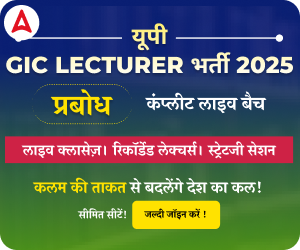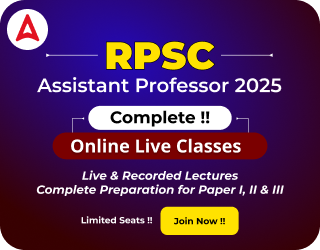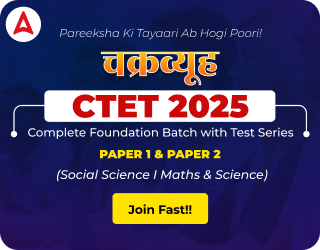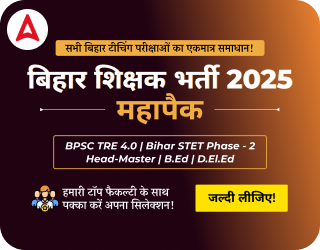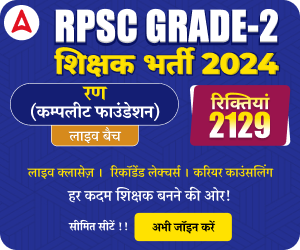Table of Contents
Models of teaching are designed to provide a framework for educators to organize their instructional strategies and enhance the learning experience of their students. The main purpose of models of teaching is to provide a structured approach for teachers to plan and implement effective teaching practices in their classrooms. These models act as the basis for the indoctrination of teaching theories and, therefore, teaching models contribute towards effective and interesting teaching.
Teaching Models Definition
- According to Joyce and Weil, “A model of teaching is a plan or pattern that can be used to shape curriculum (long-term courses of study), to design instructional materials, and go guide instruction in the classroom and other settings.”
- According to Eggen, “Models are prescriptive teaching strategies designed to accomplish the particular instructional goal.”
These models are used to achieve the specific objectives of various school subjects and make them more effective and purposive. Teaching models are helpful to develop social efficiency, personal abilities, cognitive abilities and behavioural aspects of the students.
UGC NET Study Notes for Paper 1, Download PDF
Purposes of Teaching Models
These models are the paradigms of hypotheses of teaching which are helpful in formulating theories of teaching. Models of teaching serve several purposes, including:
- Guide Lesson Planning: Models of teaching provide a roadmap for teachers to plan their lessons and instructional activities. By following a model, teachers can ensure that they cover all the necessary content and learning objectives in a coherent and organized way.
- Enhance Student Learning: Models of teaching are designed to promote student engagement and active learning, which can lead to improved learning outcomes. By using effective instructional strategies, teachers can help students to develop critical thinking skills, problem-solving abilities, and a deeper understanding of the subject matter.
- Encouraging Teacher Reflection: Models of teaching can also help teachers to reflect on their instructional practices and to identify areas for improvement. By examining the effectiveness of different teaching strategies, teachers can refine their approach and adapt their methods to better meet the needs of their students.
Models of Teaching
Many educationists have suggested different classifications of teaching models. Israel Scheffler has described three major philosophical teaching models. E.E. Haddan explained four teacher educational models. There are several other classifications also. But the following are three classifications

Historical Teaching Model
- Socratic Teaching Model: The Socratic teaching model involves asking thought-provoking questions to encourage critical thinking and stimulate deep insights. This method is based on the belief that knowledge is within individuals and can be drawn out through dialogue and inquiry. Socratic teaching aims to facilitate the learning process by challenging assumptions, exploring new ideas, and encouraging students to think for themselves.
- Classical Humanistic Model: The Classical Humanistic teaching model emphasizes the importance of student-centred learning and recognizes the role of the teacher as a facilitator and guide. This model encourages the development of a positive and supportive classroom environment that fosters students’ intrinsic motivation, creativity, and self-expression. It also emphasizes the importance of personalized learning experiences, individualized feedback, and opportunities for self-reflection and self-evaluation.
- Personal Development Model: The Personal Development teaching model focuses on helping students develop self-awareness, self-esteem, and interpersonal skills. It emphasizes the importance of personal growth and the role of education in fostering students’ personal and social development. This model encourages students to explore their strengths, interests, and values and provides opportunities for self-reflection, goal-setting, and feedback. The Personal Development teaching model aims to prepare students for success not only academically but also in their personal and professional lives.
Psychological Teaching Model
- The Basic Teaching Model: The Basic Teaching Model is a simple and widely used approach to teaching that consists of four stages:
(1) Preparation: In the preparation stage, the teacher plans and organizes the lesson and sets learning objectives.
(2) Presentation: In the presentation stage, the teacher introduces new concepts or information to the students.
(3) Practice: In the practice stage, students engage in activities or exercises to apply and reinforce their learning.
(4) Assessment: In the assessment stage, the teacher evaluates the student’s understanding and mastery of the lesson objectives.
The Basic Teaching Model is flexible and adaptable to different teaching contexts and subject areas.
2. The Interaction Teaching Model: The Interaction Teaching Model emphasizes the importance of active student participation and interaction in the learning process. It is based on the idea that learning is a social activity that involves collaboration, discussion, and feedback. In this model, the teacher acts as a facilitator, guiding and supporting students as they engage in group activities, discussions, and problem-solving tasks. The Interaction Teaching Model encourages students to develop their communication and interpersonal skills, as well as their critical thinking and problem-solving abilities.
3. The School Learning Model: The School Learning Model is a comprehensive approach to teaching and learning that takes into account the multiple factors that influence students’ academic and personal development. This model recognizes the importance of creating a positive and supportive learning environment, fostering students’ motivation and engagement, and providing personalized and differentiated instruction. The School Learning Model also emphasizes the importance of collaboration and communication between teachers, students, and families, as well as the use of data and evidence-based practices to inform instructional decisions and improve student outcomes.
4. The Computer-Based Teaching Model: The Computer-Based Teaching Model is an approach to teaching that incorporates technology, such as computers, software, and multimedia resources, into the learning process. This model emphasizes the use of interactive and engaging digital content to support student learning and achievement. The Computer-Based Teaching Model can provide personalized and self-paced instruction, immediate feedback and assessment, and opportunities for student collaboration and communication. This model also allows for the integration of diverse media formats, such as video, audio, and interactive simulations, to enhance student engagement and motivation.
Modern Teaching Models
- The Information Processing Teaching Model: The Information Processing Teaching Model is a cognitive approach to teaching and learning that focuses on how students acquire, store, and retrieve information. This model emphasizes the importance of providing students with explicit instruction on how to process and organize information, and how to use strategies such as rehearsal, elaboration, and mnemonics to enhance memory and learning. The Information Processing Teaching Model also encourages the development of metacognitive skills, such as self-regulation, reflection, and self-monitoring, to help students become more effective and independent learners.
- The Personal Teaching Model: The Personal Teaching Model is a student-centred approach to teaching that emphasizes the development of student’s personal and interpersonal skills, such as self-awareness, self-regulation, empathy, and communication. This model recognizes the importance of creating a positive and supportive learning environment that fosters students’ social and emotional growth, as well as their academic achievement. The Personal Teaching Model also encourages the use of varied and interactive instructional strategies that engage students in the learning process and promote their active participation and collaboration.
- The Social Interaction Teaching Model: The Social Interaction Teaching Model is a student-centred approach to teaching that emphasizes the importance of social interaction and communication in the learning process. This model recognizes that learning is a social activity that involves collaboration, discussion, and feedback. In this model, the teacher creates a positive and supportive learning environment that encourages students to share their ideas, engage in group activities, and work together to solve problems.
- The Behavior Modification Teaching Model: The Behavior Modification Teaching Model is an approach to teaching that focuses on changing students’ behaviour through reinforcement and consequences. This model emphasizes the use of positive reinforcement, such as praise or rewards, to encourage desirable behaviour and negative consequences, such as loss of privileges or time-out, to discourage undesirable behaviour. The Behavior Modification Teaching Model also involves setting clear and specific goals for student behaviour, monitoring progress, and adjusting strategies as needed.
In conclusion, these models are shaped by the methods used in the classroom to create an ideal learning environment and enhance teachers’ teaching skills and effectiveness. They contribute to improving students’ academic performance. These models remain useful in modifying and enhancing teaching approaches, thereby helping to meet the diverse needs of today’s students and facilitating better communication between teachers and students. In essence, they promote positive teacher-student interaction.
Download Models of Teaching Study Notes PDF
The direct link to download the Models of Teaching Study Notes PDF has been provided below. Candidate can read the detailed information on Models of Teaching PDF by clicking on below link.
Download Models of Teaching UGC NET Study Note PDF
| UGC NET Study Notes Important Links | |
| UGC NET Study Notes for Paper 1 | UGC NET English Literature Notes |
| UGC NET Commerce Notes | |




 समुद्र का पर्य�...
समुद्र का पर्य�...
 उपमा अलंकार: पर�...
उपमा अलंकार: पर�...
 समास परिभाषा, भ�...
समास परिभाषा, भ�...


